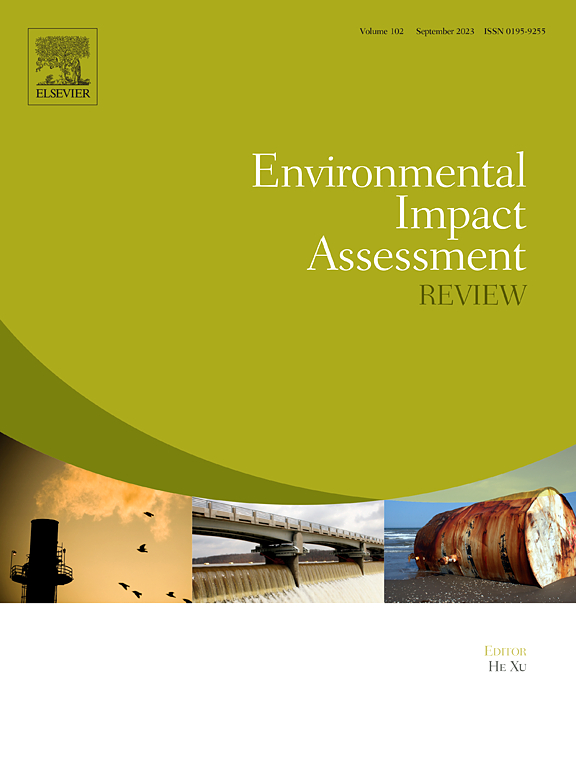实践、事件和影响:利用加拿大文化绘图的地理信息改进因果分析
IF 9.8
1区 社会学
Q1 ENVIRONMENTAL STUDIES
引用次数: 0
摘要
环境影响评估(EIA)旨在回答的大多数问题都不是统计问题,而是试图了解拟议项目与代表当地环境的重要组成部分之间的相互作用。对因果关系进行评估可以深入了解项目提案的潜在影响,为旨在实现可持续发展的决策过程提供信息。然而,尽管环境影响评估中的因果关系分析技术已经得到了很好的应用,但这些程序却很少进行调整,以纳入土著民族独特的传统生态知识(TEK)和环境。本文修改了阶梯矩阵,将传统生态知识(TEK)与文化绘图研究中的地理特征相结合,以加强涉及文化习俗事件和项目提案的因果分析。修改后的程序采用了理论和实证方法,考虑到了原住民的历史和当代背景、其文化习俗的时空特征以及文化绘图所面临的挑战。结果表明,经 TEK 修正的阶梯矩阵通过识别子模式、地理尺度的差异、文化事件的相互依存性和因果网络改进了因果分析,同时完善了对潜在的直接和间接项目相关效应、累积效应以及缓解措施的有效性的理解。本文章由计算机程序翻译,如有差异,请以英文原文为准。
Practices, events, and effects: Improving causal analysis with the geographic information from cultural mapping in Canada
Most questions that environmental impact assessments (EIAs) aim to answer are not statistical but seek to understand the interactions between proposed projects and valued components representing local environments. Assessing causality provides critical insights into the potential impacts of project proposals, informing decisionmaking processes aimed at sustainable development. However, despite wellestablished causal analysis techniques in EIAs, these procedures are rarely adapted to incorporate the unique traditional ecological knowledge (TEK) and circumstances of Indigenous peoples. This paper modifies the stepped matrix by integrating TEK with geographic qualities from cultural mapping studies to enhance causal analyses involving events of cultural practices and project proposals. The modified procedures employ both theoretical and empirical approaches, accounting for the historical and contemporary contexts of Indigenous peoples, the spatiotemporal traits of their cultural practices, and the challenges of cultural mapping. The results demonstrate that the TEK-modified stepped matrix improves causal analysis by identifying sub-patterns, differences in geographic scales, interdependencies of cultural events, and causal networks, while refining the understandings of potential direct and indirect project-related effects, cumulative effects, and the efficacy of mitigation measures.
求助全文
通过发布文献求助,成功后即可免费获取论文全文。
去求助
来源期刊

Environmental Impact Assessment Review
ENVIRONMENTAL STUDIES-
CiteScore
12.60
自引率
10.10%
发文量
200
审稿时长
33 days
期刊介绍:
Environmental Impact Assessment Review is an interdisciplinary journal that serves a global audience of practitioners, policymakers, and academics involved in assessing the environmental impact of policies, projects, processes, and products. The journal focuses on innovative theory and practice in environmental impact assessment (EIA). Papers are expected to present innovative ideas, be topical, and coherent. The journal emphasizes concepts, methods, techniques, approaches, and systems related to EIA theory and practice.
 求助内容:
求助内容: 应助结果提醒方式:
应助结果提醒方式:


